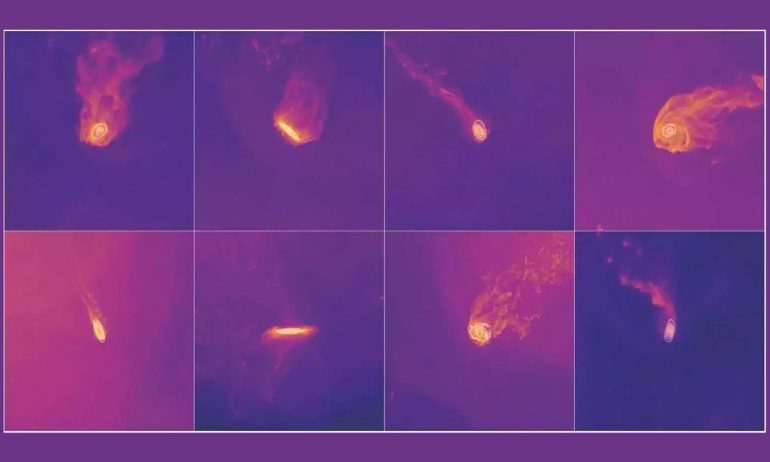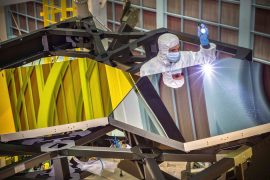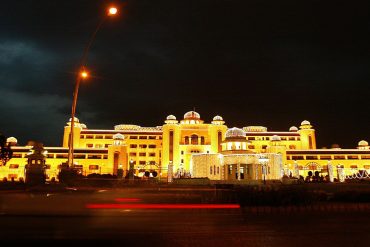In the citizen science project “Jellyfish Galaxy,” interested parties can help research the history of these cosmic objects

Eight examples of jellyfish galaxies. Such images will be submitted to the participants of the new Zooniverse project for classification.
Galaxies like our own Milky Way, which are made up of millions, billions, or even hundreds of billions of stars, are the building blocks of the universe at large. They are grouped into galaxy clusters with thousands of galaxies moving through a thin, hot, intergalactic gas. As low as the density of this gas, it is enough to allow galaxies moving at high speeds to feel a kind of “headwind”. The gas contained in the Milky Way can be “blown away” – akin to a motorcyclist with hair flying backwards. What remains is a galaxy reminiscent of a jellyfish – with a “body” made of stars and a trap made of gas.
Annalisa Pilepich and her team at the MPI for Astronomy use computer simulations to research the physical processes involved in the formation of jellyfish galaxies. To do this, they program a model universe that obeys the same physical laws as ours. Stars and galaxies arise, interact with each other and evolve further. For each of these virtual galaxies, its entire history can be reconstructed.
But to be able to study simulated jellyfish galaxies, the research team first needs to know which of the myriad galaxies are jellyfish galaxies. It is difficult for a computer to solve such a pattern recognition problem, while it is comparatively easy for a human brain with its excellent ability to recognize patterns. So people should decide which galaxies look like jellyfish in the simulation.
Teamwork in search of jellyfish galaxies
here comes Zooniverse In sports, the world’s largest and most popular platform for citizen science. Because the simulations generate huge amounts of data, thousands of volunteers work together in the “Jellyfish Galaxy” project to view a total of 38,000 images. Each of these shows a particular galaxy from a random angle, as well as gas and other galaxies in the region, if applicable. Participants decide whether that galaxy looks like a jellyfish. The Zooniverse platform provides guidance on both how to find jellyfish galaxies and feedback on the first classified images. Since each galaxy is evaluated by at least twenty people during the project, obscure cases can be filtered out.
For the jellyfish galaxies identified, Annalisa Pillpich and her team reconstructed how they came into existence and evolved — and what happened differently with galaxies that don’t look like jellyfish.
The “Jellyfish Galaxy” project is available in English, German and Ivrit.

Internet fan. Alcohol expert. Beer ninja. Organizer. Certified tv specialist. Explorer. Social media nerd.





